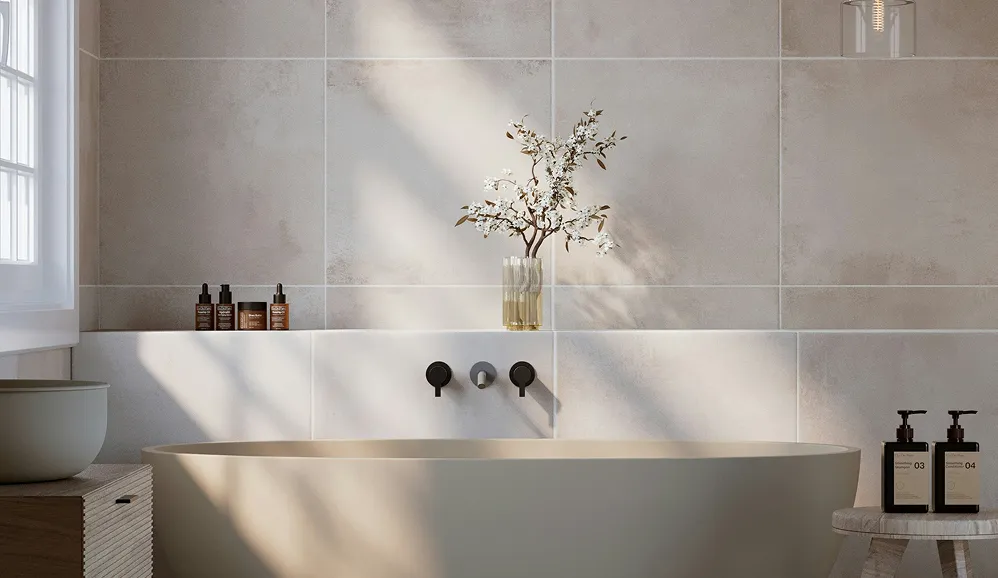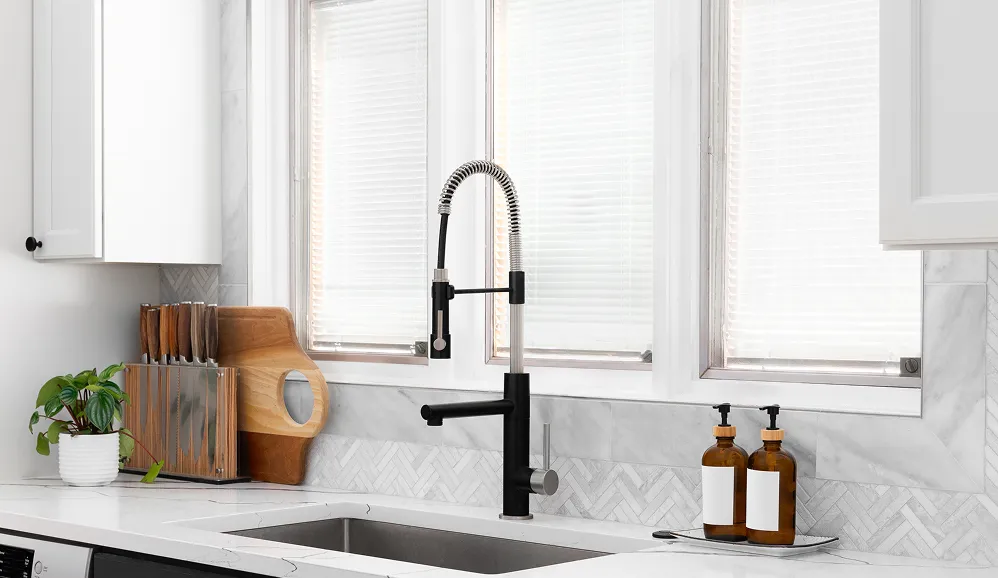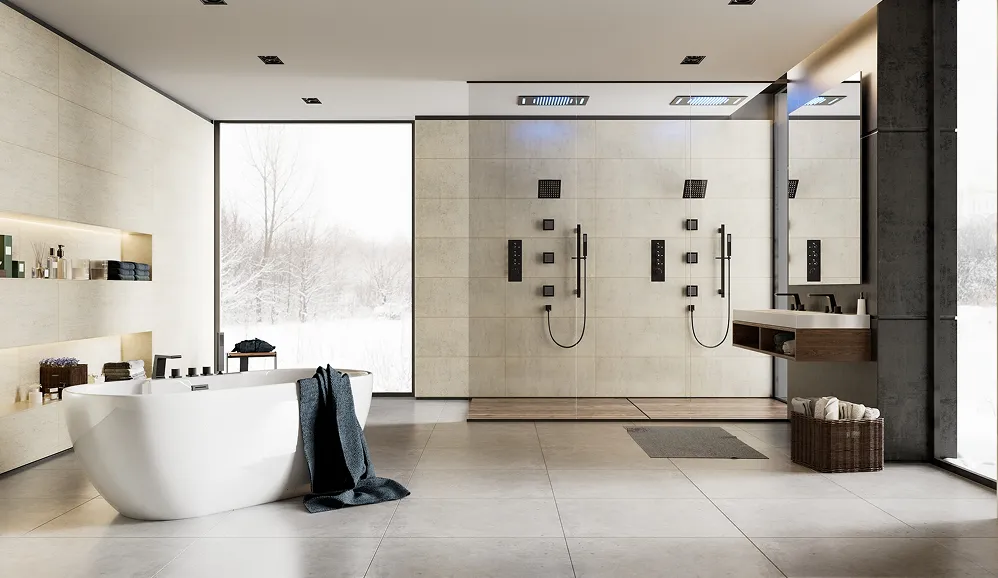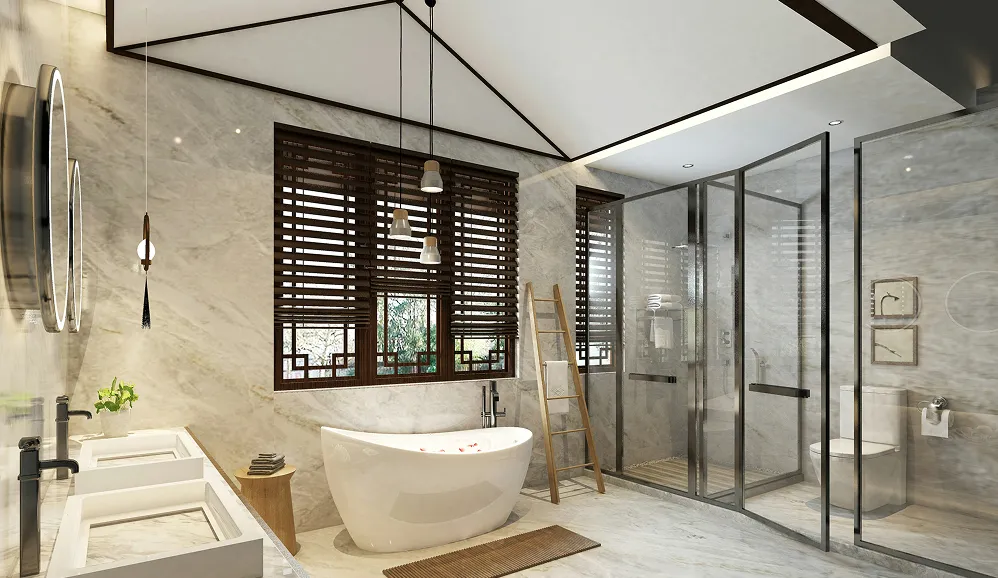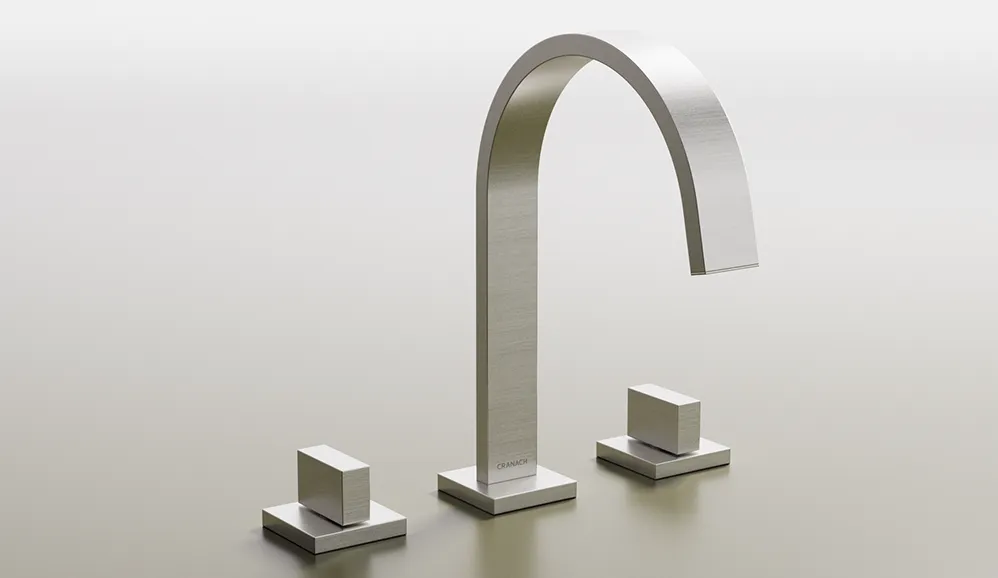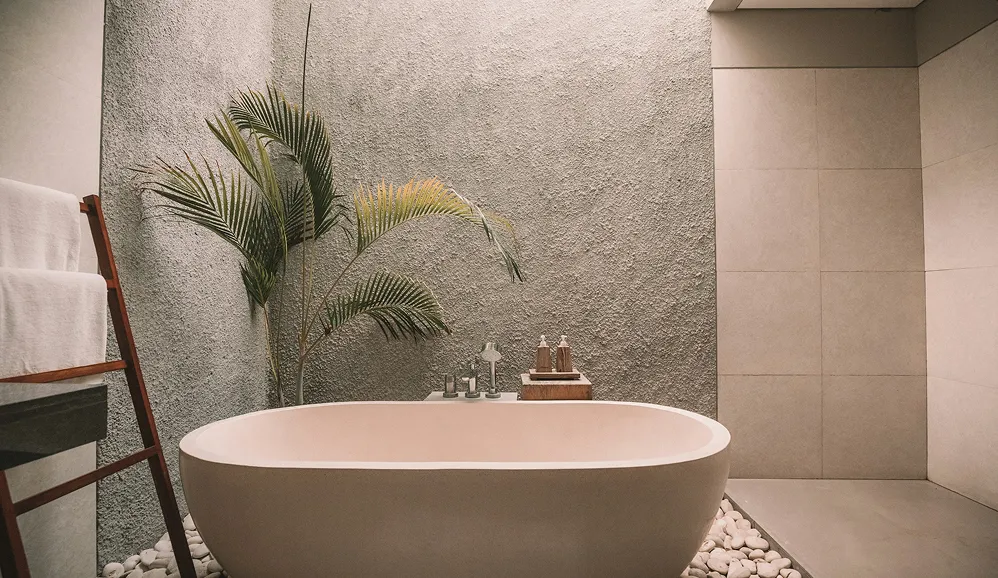So, does a hot shower actually lower your blood pressure? The quick answer is yes, but it’s a temporary effect, not a long-term fix.
The warmth of the water encourages your blood vessels to relax and widen—a process called vasodilation. This makes it easier for blood to circulate, which in turn can cause a brief dip in your blood pressure. But it’s important to remember this isn’t a medical treatment for hypertension, and if the water is scorching hot, it can actually have the opposite effect and cause a quick spike.
The Real Story Behind Hot Showers and Blood Pressure
The relationship between shower temperature and blood pressure is more complex than it first appears. While a pleasant warmth can trigger a relaxing physiological response, your individual health and the precise water temperature are huge factors. Getting this right is what makes a daily shower a source of calm rather than a potential risk.
Think of your blood vessels like tiny, flexible hoses. When you step into a warm shower, the heat signals them to expand. With more room to move, your blood flows with less force against the vessel walls, and voilà—your blood pressure temporarily drops. This is your body’s clever way of shedding excess heat, and it’s a big reason why a warm soak feels so incredibly soothing.
But “warm” is the key word here, not “scalding.” If the water is way too hot, your body can perceive it as a shock. Instead of gently relaxing, it might trigger a stress response, causing your heart rate and blood pressure to jump up for a moment. This is exactly why a well-designed shower system with precise temperature control is so valuable—it helps you create a safe, therapeutic experience every time.
Key Takeaway: A comfortably warm shower can temporarily lower your blood pressure through vasodilation. It’s a wonderful relaxation tool, but it should never replace medical advice or treatment for high blood pressure.
Let’s break down how different factors play into this.
Hot Shower Effects on Blood Pressure at a Glance
This table gives a quick overview of how a hot shower can impact your blood pressure under different conditions.
| Factor | Potential Effect on Blood Pressure | Explanation |
|---|---|---|
| Warm, Comfortable Water | Temporary Decrease | Promotes vasodilation, where blood vessels widen, allowing blood to flow more easily and reducing pressure. |
| Excessively Hot Water | Brief Initial Spike | The sudden shock can trigger a stress response, causing a temporary increase in heart rate and blood pressure. |
| Existing Hypertension | More Pronounced Drop | Individuals on blood pressure medication might experience a more significant drop, increasing the risk of dizziness. |
| Sudden Temperature Change | Potential Spike or Drop | Abruptly switching from hot to cold (or vice versa) can cause rapid constriction or dilation of blood vessels. |
Ultimately, a shower should be a safe and restorative part of your day.
This effect is just one piece of the wellness puzzle. Turning your daily shower into a calming ritual is a fantastic form of self-care. If you’re looking to build the ultimate restorative routine, you might enjoy our guide on what is an everything shower for woman. The goal is to create a consistently pleasant and safe environment that works for you.
How Your Body Reacts to Warm Water
Ever wonder what’s actually happening inside your body when you step into a warm shower? It’s a fascinating, automatic process. The moment that warm water hits your skin, your body gets to work managing the temperature change.
Think of your circulatory system as a massive network of tiny, flexible pipes. The heat from the shower signals the blood vessels closest to your skin’s surface to relax and widen. This physiological response is called vasodilation. When those vessels expand, it creates more space for blood to flow, which in turn reduces the force pushing against the vessel walls. This is the simple answer to will a hot shower lower blood pressure — at least for a little while. It’s your body’s clever way of releasing excess heat to keep your core temperature stable.
The Two-Step Response
It’s not just a one-way street, though. Your body’s first reaction to the sudden heat can sometimes be a slight, temporary spike in your heart rate. This is completely normal; it’s just part of the initial adjustment before the more powerful, calming effect of vasodilation kicks in.
Once your vessels have widened, the benefits go beyond just managing heat. The increased circulation is fantastic for soothing sore, tired muscles and can trigger a deep sense of relaxation. This is a big reason why a warm shower feels so incredible after a stressful day.
Vasodilation is the key to understanding how a shower affects your cardiovascular system. By expanding the blood vessels near the skin, your body essentially opens up a low-pressure bypass for your circulation.
Of course, the feeling of the water itself adds to the whole experience. While vasodilation deals with your body’s internal pressure, the actual water pressure from the shower head matters, too. If your shower feels more like a drizzle than a downpour, you might be interested in learning how to increase the pressure of water in your shower. Getting the right combination of perfect water temperature and satisfying water flow from your shower system is what really creates an ideal, relaxing shower.
Why Temperature and Age Change Everything
While a nice warm shower usually causes a gentle, temporary drop in blood pressure, the actual result really depends on two big factors: the water temperature and your own age. Getting these wrong can turn a relaxing daily ritual into a potential health risk, so it’s vital to know the difference.
The sweet spot for relaxation is water that’s lukewarm to comfortably warm. But if you crank the heat too high—specifically above 104°F (40°C)—you can get the opposite effect. Instead of gently encouraging your blood vessels to open up, scalding water can jolt your system, triggering a stress response that might actually spike your blood pressure for a bit.
The Impact of Age on Cardiovascular Response
As we get older, our bodies become much more sensitive to these temperature swings. The cardiovascular system just isn’t as quick to adapt as it was in our youth, which puts older adults at a higher risk from sudden changes.
Research backs this up quite clearly. One study showed that when older adults were immersed in 40°C water, their systolic blood pressure shot up, climbing from an average of 112 mmHg to 121 mmHg. The younger participants in the same study? They had no such increase. This points directly to an age-related shift in how the body processes heat. You can dig into the specifics of that study in the full research paper on PLOS ONE.
Key Insight: For older adults, what feels like a hot shower can act as a physiological shock to the system, causing blood pressure to rise instead of fall. This makes precise temperature control a must-have, not just a luxury.
It’s not just about blood pressure; our skin’s healing process also changes with age and circumstances. If you’re dealing with sensitive or healing skin, say after getting a new tattoo, you might find our guide on how long after a tattoo you can shower useful.
The image below breaks down how a hot shower can affect your body’s systems.
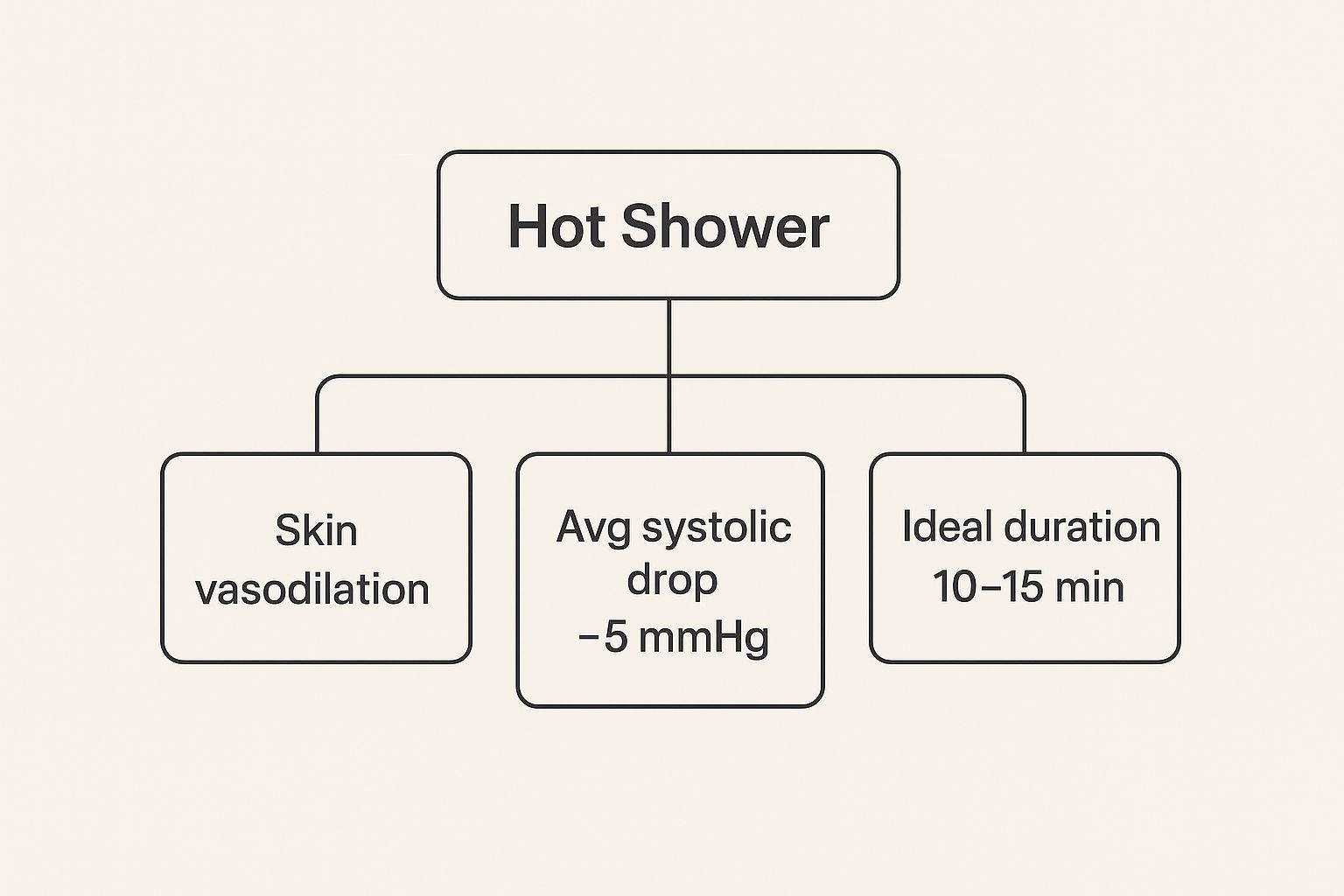
This visual shows the main process is vasodilation, which typically leads to a small drop in systolic blood pressure when the conditions are right—a shower of about 10-15 minutes at a sensible temperature. It all comes back to having careful control over your shower environment, something a quality shower system provides. An adjustable system from CRANACH lets you lock in a safe, consistent temperature, making sure your shower is always a therapeutic and predictable experience.
The Best Time of Day to Shower for Your Health
Have you ever wondered if the time you shower makes a difference to your health? A morning shower is a great way to wake up, but an evening one might be the smarter choice for your cardiovascular system, especially if you’re asking, will a hot shower lower blood pressure?
Taking a warm shower an hour or two before you turn in for the night does more than just wash away the day’s grime. It cues your body to relax deeply and can even lower levels of stress hormones like cortisol. This whole process primes you for a good night’s sleep, and as we all know, quality sleep is directly tied to healthier blood pressure levels the following day.
It’s not just about the immediate, temporary drop in blood pressure that happens when the warm water causes your blood vessels to widen. This is about the bigger picture—the profound, indirect benefits that come from getting better rest and managing stress.
Science is starting to back this up, too. A 2023 study, for instance, found that older adults who bathed in hot springs at night saw a significant drop in their morning systolic blood pressure compared to those who bathed earlier. You can read up on the research findings on night-time bathing and blood pressure yourself to see the data.
Creating Your Nightly Wind-Down Routine
To really get the benefits, you have to be consistent. Here’s how to make it a practical part of your wellness routine.
- Timing is everything: Try to schedule your shower 60-90 minutes before you plan to hit the hay.
- Keep it comfortable: The water should be pleasantly warm, not scalding hot. The goal is to relax your body, not shock it into high alert.
- Set the mood: Dim the lights to signal to your brain that it’s time to wind down. Using a quality shower system from CRANACH can also help by providing a steady, calming flow of water.
Key Takeaway: Think of an evening shower as a powerful tool for improving your sleep. Better sleep, in turn, is a cornerstone of managing your blood pressure over the long haul.
Turning your shower from a quick rinse into a deliberate act of self-care is a small change that can lead to a more restful night and a healthier morning. Of course, as you plan your new routine, you might also wonder how many gallons of hot water a shower uses to keep things efficient.
Mastering Temperature for Your Safety
The real key to a safe shower is having precise and, most importantly, consistent temperature control. This is where modern shower technology really shines. In fact, research on older adults has shown that water at or above 41°C (106°F) can raise systolic blood pressure by about 10 mmHg immediately after bathing. On the other hand, temperatures at or below 39°C (102°F) don’t cause that same spike. This highlights just how critical accuracy is. You can discover more insights about these findings in the full study.
A high-quality thermostatic shower system is your best bet for achieving this. It automatically holds a pre-set water temperature with incredible accuracy, so you don’t have to worry about dangerous fluctuations or getting accidentally scalded by a sudden surge of hot water.
This simple upgrade changes your daily shower from a potential cardiovascular gamble into a reliable, restorative ritual. By focusing on creating a serene atmosphere, you can take this experience even further. Exploring the wellness shower provides a unique approach to cleansing the body and brings a sense of calm to your day.
Frequently Asked Questions
As you start thinking about how your shower habits affect your health, you’re bound to have some questions. It’s only natural. Here are some straightforward answers to the most common things people ask about showering and blood pressure, so you can make choices that are both safe and smart.
How Long Should I Shower if I Have High Blood Pressure?
If you’re managing high blood pressure, a good rule of thumb is to keep your showers to about 10 to 15 minutes. That’s usually the sweet spot—enough time to feel the relaxing, muscle-soothing benefits of the warm water without staying in so long that the heat starts to make you feel dizzy or lightheaded.
Ultimately, the most important thing is to listen to your body. If you ever start to feel off—maybe a little faint, dizzy, or just unusually tired—it’s time to cut the shower short. Your safety always comes first.
Can a Hot Shower Replace My Blood Pressure Medication?
Let’s be crystal clear: absolutely not. A warm shower can be a fantastic, calming part of your day, but it is in no way a medical treatment for hypertension. The drop in blood pressure from a shower is both temporary and mild.
Crucial Reminder: Never, ever stop or alter your prescribed blood pressure medication without your doctor’s explicit instruction. Your medication provides the steady, long-term control that is absolutely essential for managing your health and preventing serious complications.
Think of a warm shower as a great supporting player—like meditation or a healthy meal—but it can never take the place of proven medical treatment.
Is a Cold Shower a Better Option for Blood Pressure?
This is a common misconception, but a cold shower is generally not a better choice if you have blood pressure concerns. The shock of cold water triggers the exact opposite of what a warm shower does; it causes vasoconstriction, a process where your blood vessels clamp down and narrow almost instantly.
This sudden narrowing forces your heart to work much harder to push blood through your body, causing a sharp, temporary spike in blood pressure. For anyone with hypertension or an existing heart condition, that kind of jolt can be risky. For most people, a comfortable, lukewarm shower is by far the safest bet.
Why Is a Thermostatic Shower System Recommended?
A thermostatic shower system is a game-changer for anyone with health concerns, especially blood pressure, because it delivers incredible safety and precision. The magic is in its anti-scald valve, which constantly adjusts the hot and cold water mix to hold your chosen temperature steady.
It completely gets rid of those sudden, dangerous temperature swings that can shock your cardiovascular system. Someone can flush a toilet or start the washing machine, and your shower temperature won’t budge. This kind of technology, like you’ll find in a quality system from CRANACH, turns your daily shower from a potential risk into a predictable, safe, and genuinely therapeutic experience, every single time.
Ready to upgrade your bathroom with a system designed for safety, comfort, and peace of mind? Explore the advanced thermostatic shower system options from CRANACH and discover how precise temperature control can elevate your daily wellness routine.

